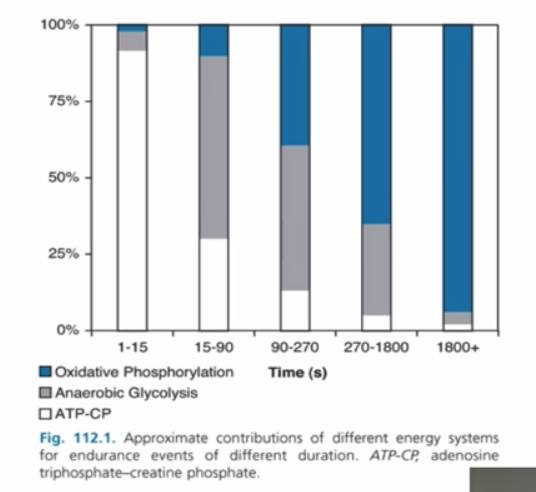Hey guys, so if lactic acid is a by product of glucose what is the by product of ketones when weight lifting in hypertrophy training.
Lactic acid
When glucose is burned in a anaerobic state it produces lactic acid that then goes to the liver converted back to glucose then back to muscle to be burned. Ketones can be used by the muscle but most times when fat adapted they are spared to be used by the brain and fatty acids are broken down and used by the muscle. This depends on the level effort in the exercise. So hypertrophy most times about the 6 to 15 rep range and is where glucose is needed. In this chart you can see that atp-cp will give you about 15 seconds of energy this reserve also is replenished if you rest about 4 min between sets. When keto and training with sets of say 5x5 and resting for about 4 min between sets you will have no problem. When you try to rest less or do say 6 to 20 reps you will then depend on your anaerobic glycolisis. This reserve is limited on keto. This is where possibility using about 20 grams of dextrose before a workout will help increase this supply. The oxidation Phosphorylation is where fat and ketones are used and as you can see in the chart they just are not used that much in the zone that would be used for hypertrophy training. I am not sure if you body will use exogenous ketones in the hypertrophy phase as well as it does glucose in the muscle. This could depend on how adapted you are and if you have developed a lot of what they call MCT transporters. But again i do not know if your body just will save them for the brain. From my personal experience being adapted for over 3 years i only need or can see benefit with dextrose when doing reps of say 6 to 20 with rest less then 2 min between sets. It is advised if you are suffering from any metabolic disorders or have not been adapted over 3 months not to use this approach. I
I find my weight lifting performance is better when I’m eating 60 to 80 g of carbs instead of restricting to 20. And I’ve found I can do that two or three times weekly and not drop below 0.5 mmol/l ketones so long as I stick to low glycemic carbs in vegetables, nuts and seeds, etc.
If I end up lifting on a very low carb day I get ok results with a shorter session for each lift doing a warm up set of a few very slow reps at moderate weight to failure followed with a rest of 1-2 minutes then a set of quick reps at a high weight that typically results in failure between 2 and 5 reps.
You probably are not/no longer insulin resistant. Yahoo!
Just had blood work done which definitely makes me look less insulin resistant, 12 hour fasted blood glucose was 79 mg/dl down from 120 at my worst about 2 years ago. And 12 hour fasted insulin was 2.3 reference range 2 to 20, but I expect the numbers wouldn’t look good with an OGTT.
Hey Todd- Congrats on the numbers!! That’s great news!
I’m quite a bit behind you on the journey.
I just starting to add weightlifting to my routine. I’m trying that Body by Science technique (once a week-hard). So far I’ve noticed my ketones jumped to a higher level and then seemed to trend down to baseline over 3-4 days.
Thanks for posting- I’m assuming I could tolerate some additional carbs, like you, with intense lifting; but I haven’t tried it yet. I think it will be interesting to see.
